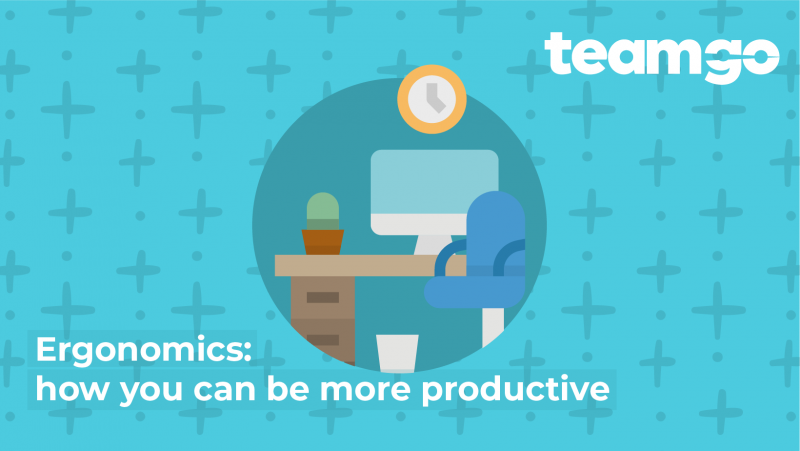A recent study found that office workers spend up to 55% of their day sitting. From all the people surveyed up to 60% admitted to not even leaving their desks during their lunch break. We’re are living out lives chained to our desks and that is not doing any favours to our happiness, productivity or posture. These alarming statistics emphasise just how important it is to have a healthy work-life balance as well as an office that promotes your wellbeing. This article will highlight three ways you can create an ergonomic desk, minimising the harsh effects that sitting all day has on your body.
First, let’s discuss the harsh effects of sitting too much.
Side Effects of Prolonged Sitting
Prolonged sitting can have serious consequences on your body. Here’s a list of side
effects from sitting too much at work:
- Recurring strain injuries are commonly linked to athletes. However, they are often found in
office workers too. This type of injury is caused by repetitive movements and your body
being put into awkward positions. - Musculoskeletal disorders affect human body movements and your musculoskeletal system (bones, tendons, muscles, ligaments and so on), Common injuries include Bursitis, Carpal Tunnel Syndrome, upper
body strains and tendon injuries. - Lower back issues can cause discomfort in the lower back or in the lumbar region.
Now, these are three ways you can organise your desk to be ergonomic and to stay clear of any injuries.
Chair
Your chair plays a significant role in the ergonomics of your workspace. A bad posture is one of the main sources of injury. Here’s some advice on how to use your chair:
- Your hips should always remain as far back into your chair as possible.
- The height of your seat should be at a measure that allows your feet to sit flat on
the floor and your knees lower or level to your hips. - Alter your reclining feature to about 100°.
- Incorporate cushions or small pillows to aid your upper and lower back.
- Utilise your armrests to maintain relaxation in your shoulders.
- Avoid chicken wings (sticking your elbows out) and maintain your arms in a vertical position.
Even though you have mastered the ergonomic way of sitting in your chair you should still alter your posture regularly. It’s not so healthy to sit in one potion for too long, as it can cause strains. Change positions every now and then and stretch your legs every 30 or so minutes.
Computer and Phone
It’s important to acknowledge that you stare at your computer monitor for most of the day. Therefore, it is necessary to position your screen ergonomically so that you can sit comfortably and avoid strains. Here are some useful positions for your computer screen:
- Your monitor’s top should be at eye level or roughly 15° below or your eye level.
- By distancing your monitor about 51 cm away from your head it decreases eye strain.
- Obtain prescription glasses (if needed) and add a “blue filter” to your prescription, which blocks the blue light emitted by electronic devices and which harms our eyesight.
- Keep your keyboard centred with your monitor.
- Sit roughly at arm’s length from the screen.
- Place your phone in a spot that will stop you from twisting your neck/body.
- Place any papers that need reading between your computer and keyboard which
will reduce the number of times you need to twist your neck/body. - Don’t use your shoulder to hold up your phone. Instead, use a headset or on speaker.
Keyboard
Your computer keyboard is a crucial factor in inducing office injuries. Always consider your keyboard and hand position in the ergonomics of your desk.
- Your keyboard should remain centred with your monitor and in the middle of your desk.
- Search for an ergonomic keyboard to help you maintain the natural position of your wrists. Most keyboards come with a tab at back that helps you lift it to a slight angle.
- If you don’t have an ergonomic keyboard and must maintain your wrists in a neutral position, add the angle to your desk.
- If the angle does not suit you, then try to pose your arms at a 90° angle.
- Place the mouse close to keyboard this will assist you with the back and forth transition.
Conclusion
Once your desk is organised ergonomically, it becomes personalised to support your body and only yours. Your setup will keep you from musculoskeletal injuries, eliminating physical and mental stress often created at your desk.
As much as all these tips assist with your desk setup it’s also vital to note that physical activities should still be incorporated into your routine to ensure optimal physical health. Use your work breaks to move your body. WebMD suggests taking 35 minute breaks within every 20-40 minutes to decrease the incidence of injury. Standing up, stretching and focusing on a non-electronic device is also essential to lower any muscle tension or eyestrain.







